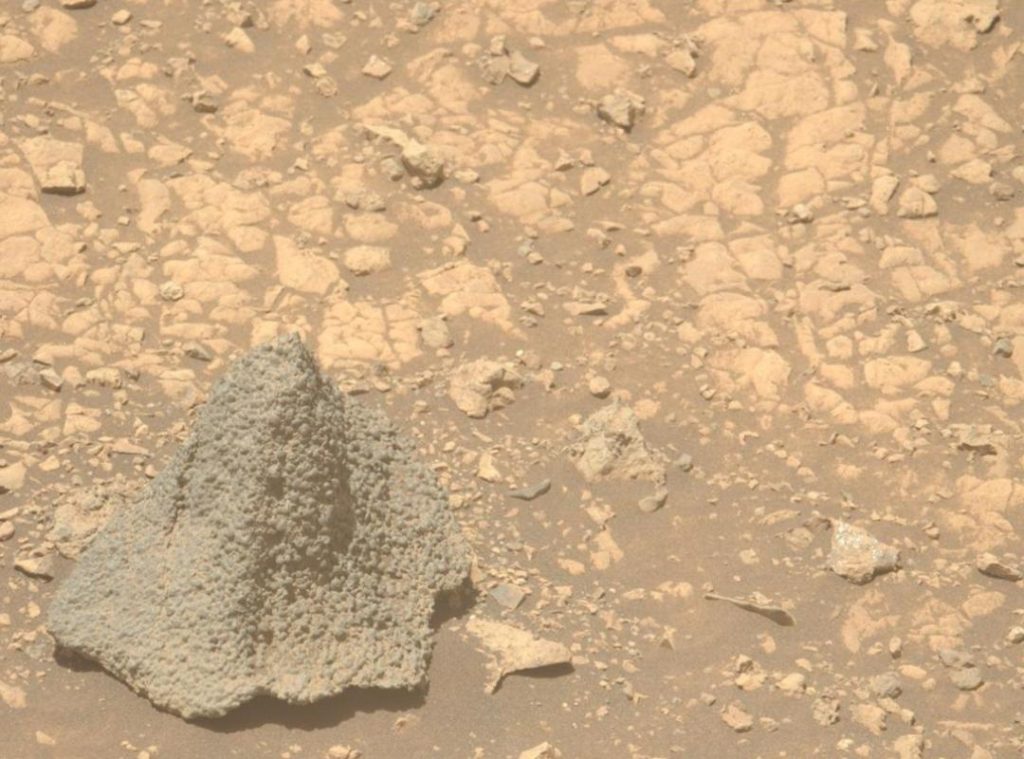
Perseverance Rover Captures Mysterious Helmet-Like Rock on Mars
NASA’s Perseverance rover has sent back a fascinating image from the Martian surface, capturing a volcano-shaped rock that bears a striking resemblance to a weathered battle helmet. The peculiar rock formation was photographed by the rover’s Left Mastcam-Z camera and has left scientists intrigued by its unique shape and texture.
The image, which was taken on Sol 335 (337 Martian days) of the Perseverance rover’s mission, shows a rocky outcropping with a rounded, helmet-like shape. The surface of the rock is composed of tiny spherical formations called spherules, which are scattered across its surface. The spherules are thought to be the result of chemical weathering, mineral precipitation, or volcanic activity, but the exact mechanism behind their formation is still unknown.
The discovery of this mysterious rock is significant because it provides scientists with a unique opportunity to study the geological history of Mars. The planet’s surface is a barren, rocky expanse, with few signs of liquid water or life. However, rocks like this helmet-shaped formation offer a glimpse into Mars’ past, when the planet was likely much more hospitable to life.
“The shape and texture of this rock are unlike anything we’ve seen before on Mars,” said Dr. Nathalie Cabrol, a scientist at NASA’s Ames Research Center and a member of the Perseverance rover’s science team. “The spherules are a key feature of this rock, and they’re helping us to better understand the geological processes that have shaped Mars over millions of years.”
The Perseverance rover was launched on July 30, 2020, and landed on Mars on February 18, 2021. The rover is equipped with a range of scientific instruments, including cameras, spectrometers, and a drill that can collect samples from beneath the Martian surface. The rover’s mission is to explore Jezero Crater, a 45-kilometer-wide impact crater that was once home to a lake.
The helmet-shaped rock is located in the western part of Jezero Crater, near the rover’s landing site. The rock is estimated to be around 10-15 meters (30-45 feet) in length, and its surface is covered in a thick layer of dust and debris.
Scientists are eager to study the rock in more detail, using the rover’s instruments to analyze its composition and structure. The rover’s Alpha Particle X-Ray Spectrometer (APXS) is particularly well-suited to this task, as it can detect the chemical makeup of the rock and provide insights into its geological history.
“The APXS is a powerful tool for understanding the chemical composition of Martian rocks,” said Dr. Scott Johnson, a scientist at NASA’s Johnson Space Center and the principal investigator for the Perseverance rover’s APXS instrument. “By analyzing the chemical makeup of this rock, we can learn more about the geological processes that have shaped Mars over millions of years.”
The discovery of this mysterious rock is a reminder of the incredible diversity of geological features on Mars. The planet’s surface is characterized by vast, barren plains, towering volcanoes, and deep canyons, but it also contains a range of smaller-scale features, like this helmet-shaped rock, that offer insights into the planet’s geological history.
As the Perseverance rover continues its exploration of Jezero Crater, scientists are hopeful that it will uncover even more secrets about Mars’ past. The rover’s mission is scheduled to run for at least 687 days, but it could potentially operate for much longer if NASA extends its mission.
For now, the helmet-shaped rock remains one of the most fascinating and mysterious discoveries on Mars, offering a glimpse into the planet’s geological past and a reminder of the incredible wonders that await us on the Red Planet.
Source: https://mars.nasa.gov/mars2020/multimedia/raw-images/






